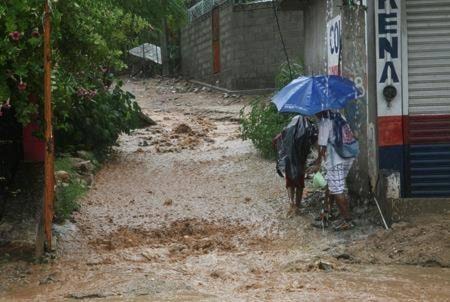MIAMI — The Latest on tropical weather in the Atlantic and Pacific oceans (all times local):
11:15 a.m.
Hurricane season is roaring on as Tropical Storm Lee forms far from land, Jose threatens the U.S. East Coast and Norma moves closer to Mexico.
Norma is forecast to pass near the resort-studded southern tip of Mexico’s Baja California Peninsula late Sunday and early Monday.
Meanwhile in the Atlantic, Jose threatens to impact the Northeast part of the U.S. in the next few days, and Lee developed into a tropical storm.
The U.S. National Hurricane Center in Miami said Saturday that Lee had sustained winds of 40 mph (65 kph) and was about 655 miles (1055 kilometres) west of the Cabo Verde Islands. Little change in strength is forecast over the next couple of days.
To the west, another disturbance prompted tropical storm watches for a portion of the Lesser Antilles. The system is about 755 miles (1215 kilometres) east of the area, and the governments of St. Lucia, Martinique, Guadeloupe have issued watches.
___
8:30 a.m.
A tropical storm warning was in effect Saturday for the resort-studded southern tip of Mexico’s Baja California Peninsula due to Hurricane Norma, which is forecast to pass nearby in the coming days.
The U.S. National Hurricane Center said the storm was essentially stationary in the morning but was expected to resume motion toward the north and approach waters west of the peninsula late Sunday or early Monday.
Norma had maximum sustained winds of 75 mph (120 kph), just above the minimum threshold for a Category 1 hurricane. The storm was 260 miles (420 kilometres) south of Cabo San Lucas.
The peninsular region that’s home to the twin resort cities of Cabo San Lucas and San Jose del Cabo was hit about two weeks ago by Tropical Storm Lidia, which flooded streets and homes and killed at least four people.
In the Atlantic, Hurricane Jose was far from land but generating powerful swells that the centre said were affecting coastal areas in Bermuda, the Bahamas, Puerto Rico, Hispaniola and the U.S. southeast.
The centre added that tropical storm watches were possible for the U.S. East Coast later in the day and advised people from North Carolina to New England to monitor Jose’s progress.
The hurricane had maximum sustained winds of 80 mph (130 kph). It was located about 550 miles (885 kilometres) south-southeast of Cape Hatteras, North Carolina, and was heading northwest at 9 mph (15 kph).
